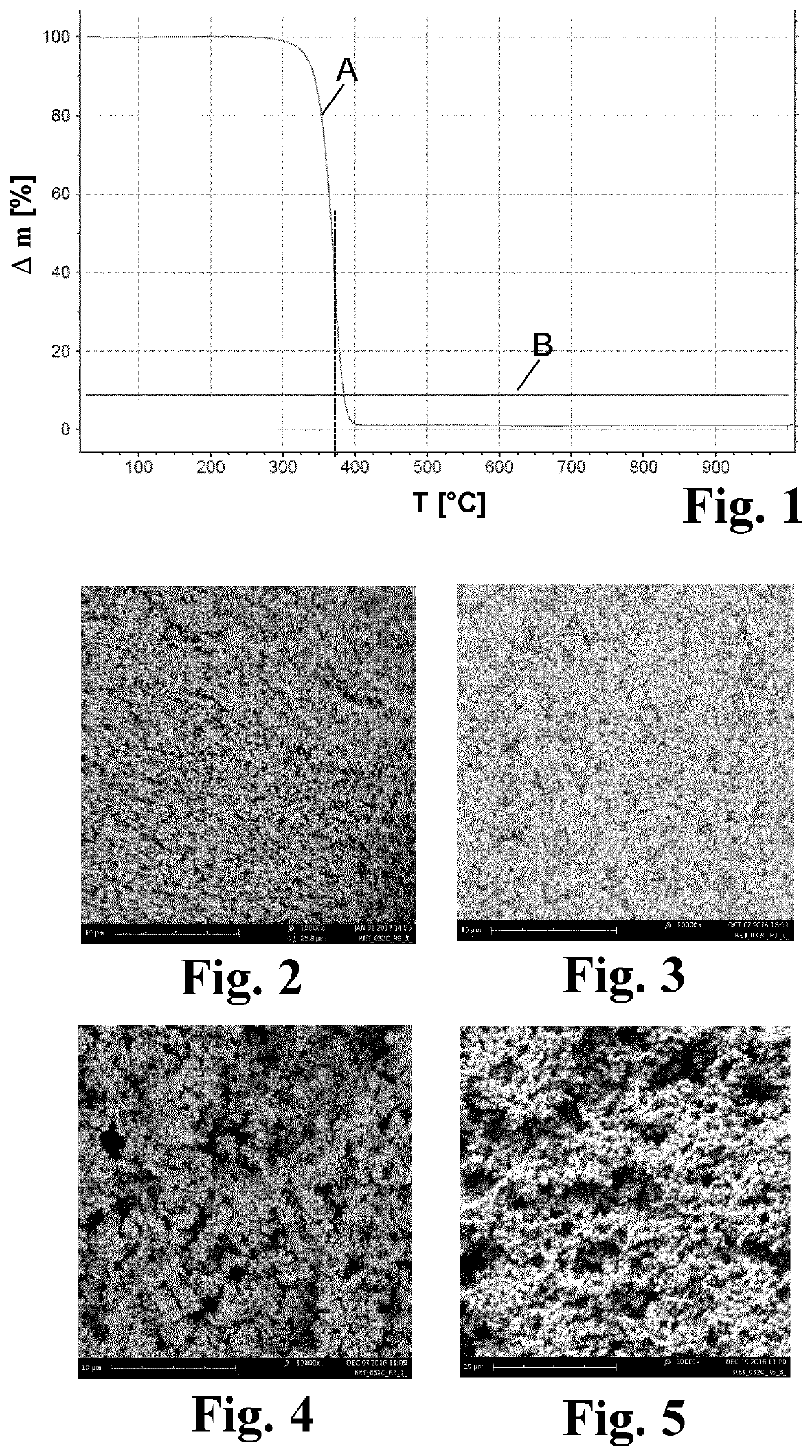Process for preparing a porous carbon material and a porous carbon material obtainable by this process
a technology of porous carbon and obtainable by this process, which is applied in the field of process for preparing porous carbon materials, can solve the problems of complex health and safety, high cost of the process, etc., and achieve the effects of reducing the total carbon yield, reducing the overall carbon yield, and reducing further carbon loss
- Summary
- Abstract
- Description
- Claims
- Application Information
AI Technical Summary
Benefits of technology
Problems solved by technology
Method used
Image
Examples
Embodiment Construction
[0093]In the preferred embodiment the porous carbon material is produced by combining an aqueous resorcinol-formaldehyde resin (Novolac resin) or solid pellets of resorcinol-formaldehyde / phenolic-formaldehyde resin (Novolac types) and an amphiphilic molecule (either a block copolymer or a surfactant or a (non-ionic) emulsifier or a combination of amphiphilic molecules). The components are mixed to obtain a homogenous precursor material.
[0094]The heat treatment of this is performed in one-step in inert atmosphere (nitrogen or argon). The heating rate from room temperature to 400° C. ranges from 0.67° C. / min to 5° C. / min. Thereafter the heating begins again to the desired final temperature from 600 to 3000° C., preferably above 900° C. The thus obtained porous carbon material is cooled down, removed from the oven, and mechanical crushed / milled to the desired particle size.
[0095]The recipe of the constituents of the specific precursor material sets the initial parameters for the result...
PUM
| Property | Measurement | Unit |
|---|---|---|
| Temperature | aaaaa | aaaaa |
| Temperature | aaaaa | aaaaa |
| Temperature | aaaaa | aaaaa |
Abstract
Description
Claims
Application Information
 Login to View More
Login to View More - R&D
- Intellectual Property
- Life Sciences
- Materials
- Tech Scout
- Unparalleled Data Quality
- Higher Quality Content
- 60% Fewer Hallucinations
Browse by: Latest US Patents, China's latest patents, Technical Efficacy Thesaurus, Application Domain, Technology Topic, Popular Technical Reports.
© 2025 PatSnap. All rights reserved.Legal|Privacy policy|Modern Slavery Act Transparency Statement|Sitemap|About US| Contact US: help@patsnap.com



